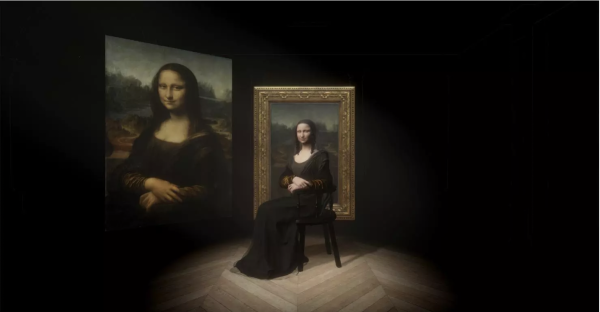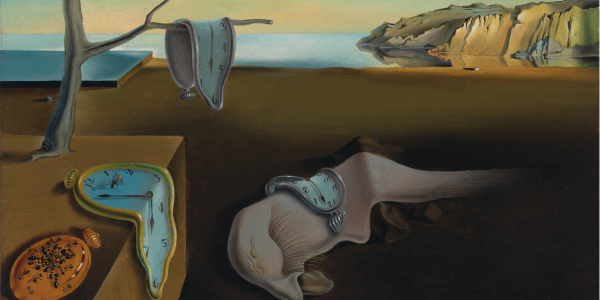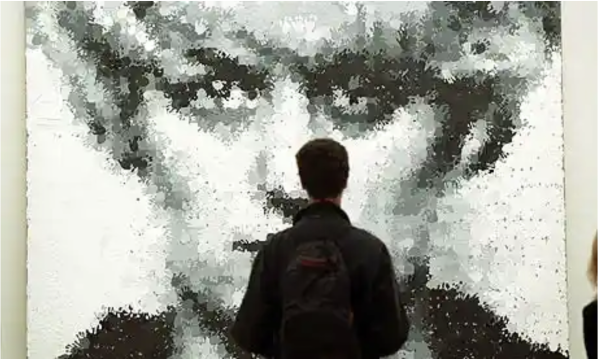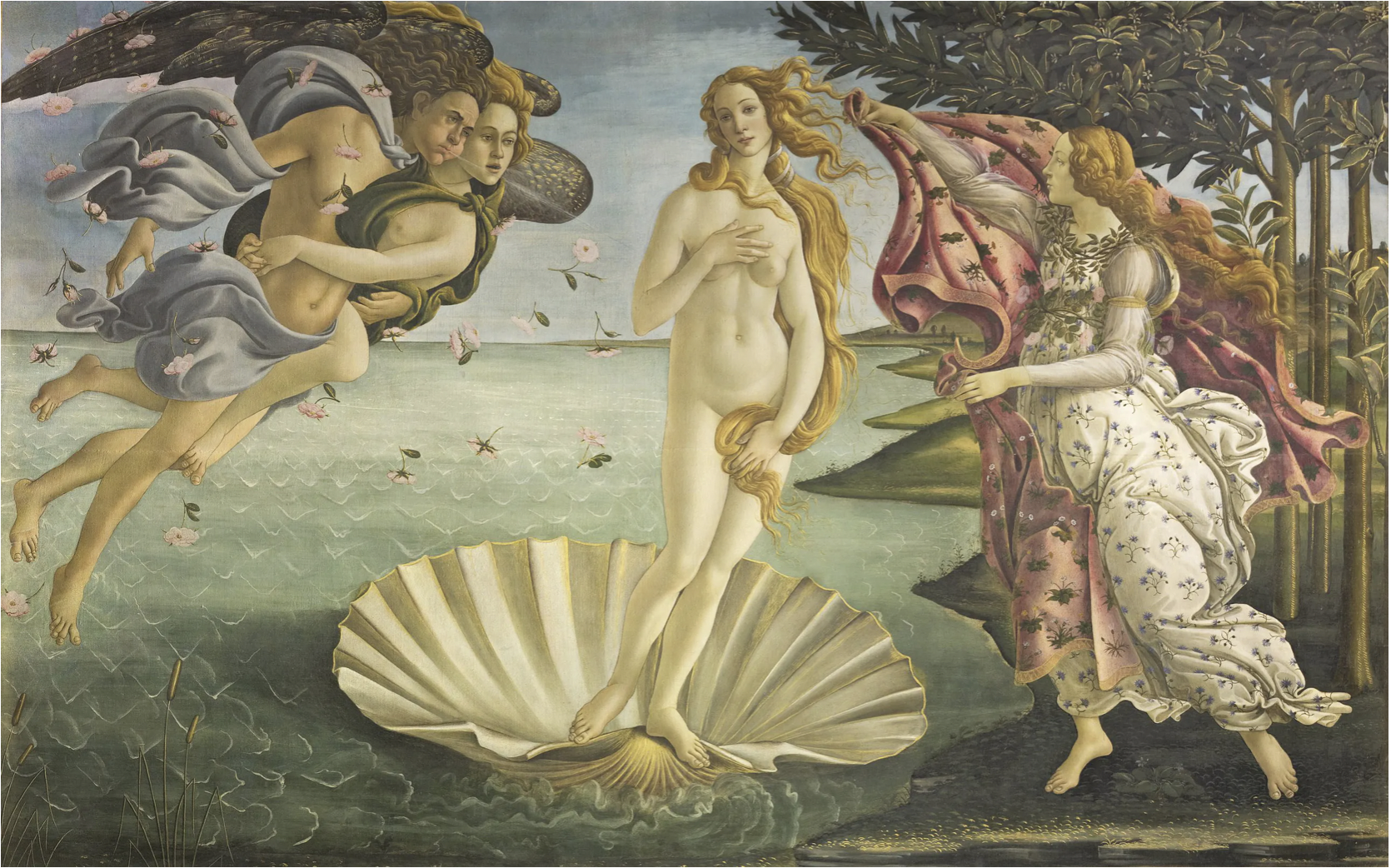Old and famous art pieces used to have positive meanings, such as talent, beauty, and love. Now, popular artwork focuses closely on negative political and social issues. In the past few years, controversies have developed regarding artists’ intent with their art pieces.
Art is subjective, so there is no right or wrong way to feel about interpretations, which goes both ways. Artists are automatically given the right to freedom of expression, and viewers always have open interpretation. How people perceive and feel about art has changed alongside this.
Historic Art Pieces
The “Birth of Venus” was painted by Sandro Botticelli from 1484 to 1486. This intricate work of art displays the value of Roman and Greek heritage. The meaning behind this artwork is the vision behind spirituality, and the birth of love.

The subject, Venus, is the attention grabber of this painting, and is known as the goddess of beauty and fertility. Botticelli wanted to demonstrate how someone’s beauty could change how others perceive them. This could go both ways, beauty or lack of, but he painted Venus in a way that flatters her natural elegance.
When someone thinks of historic art, the “Mona Lisa” is definitely one of the first pieces that comes to mind. It was painted in 1503, by Leonardo da Vinci, with oil paints on a wood canvas. He believed that women have natural beauty that comes from within, and portrayed that in his artwork.
Leonardo did this by adding skillful details and shading to Lisa del Giocondo’s facial features. This painting was found in his studio after he passed away in 1509. It is now located at the Louvre in Paris, but was painted in Florence, Italy.
An appealing art piece that changes one’s way of thinking is definitely “The Persistence of Memory.” It was created in 1931, by Salvador Dali, who wanted to express how dreams are a distorted view of reality. The subconscious mind is typically interpreted in dreams, and revealed when analyzed.

This is crucial when trying to figure out hidden feelings during psychological matters. The melting, fluid-like clocks portray a representation of time “flying” by when having fun. It can also feel slow and droopy when feelings of boredom arise. The concept of time is subjective and a different experience for each individual. There is a fairly common trend with these historical pieces that they all seem to follow.
Newer, Famous Art Pieces
When it comes to disturbing artwork, “Mother and Child Divided” automatically suggests itself. This classic Minimalist sculpture shows two halves of a real, once living, cow that was taxidermied and used as art. They were split in half, with an adequate amount of space in between, to expose the insides of these animals. They are in an enclosure filled with formaldehyde to preserve these deceased animals.

For most people, looking at this piece brings nothing but pure disgust and discomfort. On the other hand, some people view it as a work of art because of how unique it is. A well known motto, first quoted by Cesar A. Cruz, that many people go by is, “art should comfort the disturbed and disturb the comfortable.”
Some artists focus on distressing events that happened communally during a certain time period. This is usually done to raise awareness, but sometimes artists do it to invalidate those who were affected. Marcus Harvey made the bold decision to create “Myra.” It is a great example of portraying a tragedy that strongly affected a population.
Myra Hindley was a very well-known, and feared, child murderer that prowled the streets of Manchester England. In the background of the painting, Harvey used the actual handprints of Myra’s victims. This controversial tactic made viewers feel very uneasy and uncomfortable. The families of these children who were taken too soon, felt very violated and disrespected.

It is common for artists to exaggerate their work extremely far, and not take into account that they could possibly disrespect a large group of people. Andres Serrano’s “Piss Christ” is a vivid example of this. This piece displays a frail, beaten up looking figure of Jesus in a jar of Serrano’s urine. His intent was to show his anger towards the church, because of his negative experiences.
There is still a wide-spread debate about whether this is a form of blasphemy, or therapeutic expression. Upset protesters expressed their anger by destroying the piece with a hammer, at the Edward Tyler Nahem Fine Art exhibit. Congress ended up getting involved in a case regarding ‘offensive’ public art displays. According to the standard they enforced, the National Endowment for the Arts (NEA) now must “take into consideration general standards of decency and respect for the diverse beliefs and values of the American public” when distributing grants.
‘Questionable Things’ and ‘Unquestionable Masterpieces: So, what does art mean?
When it comes to the topic and opinion of art meanings, there is no right or wrong answer. A consistent trend of opinions does not seem to remain, even amongst those who have a deep knowledge and understanding of this matter.
Michael McCaffrey, the Chair of the Art Department at College of the Canyons, stated, “There’s a lot of historical figures that have made questionable things, just as there are less traditional modern artists that have made unquestionable masterpieces.” There are many examples that correlate with his statement, whether they are from decades or months ago.
McCaffrey then expressed, “Art cannot be split easily into old (better) and new (flawed) categories.” Some older art pieces are still seen as ‘pessimistic’ or ‘troubling.’ Many wonderful art pieces today still focus on the true beauty and talent of the artist, and not as much about the meaning.
The beauty behind the world of art is how diverse it is. Artwork is never consistent; you never really know what to expect. There is not one main person that tells everyone whether a piece is appealing or not. It all depends on how one perceives art, which is a lot easier with an open mind.



